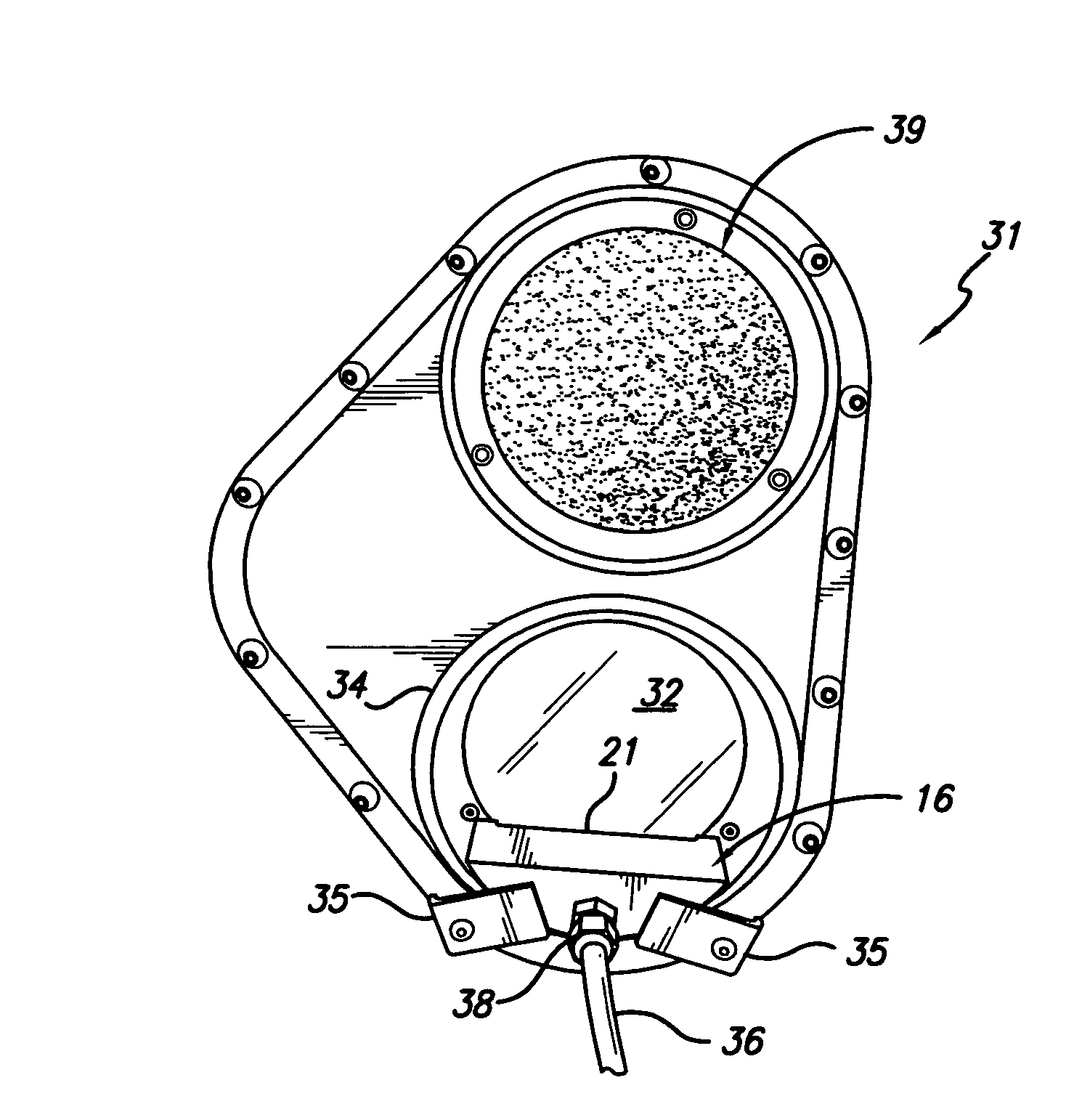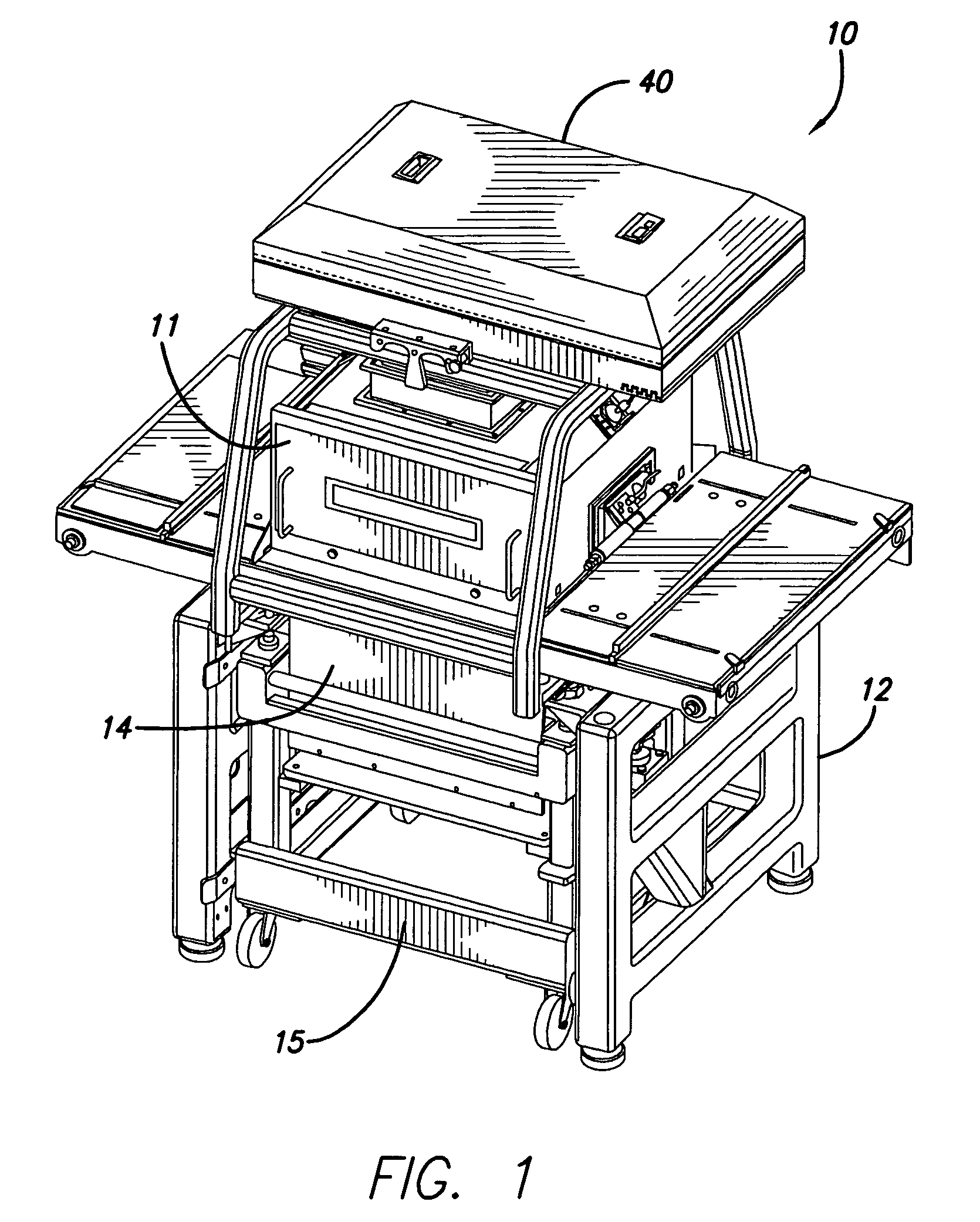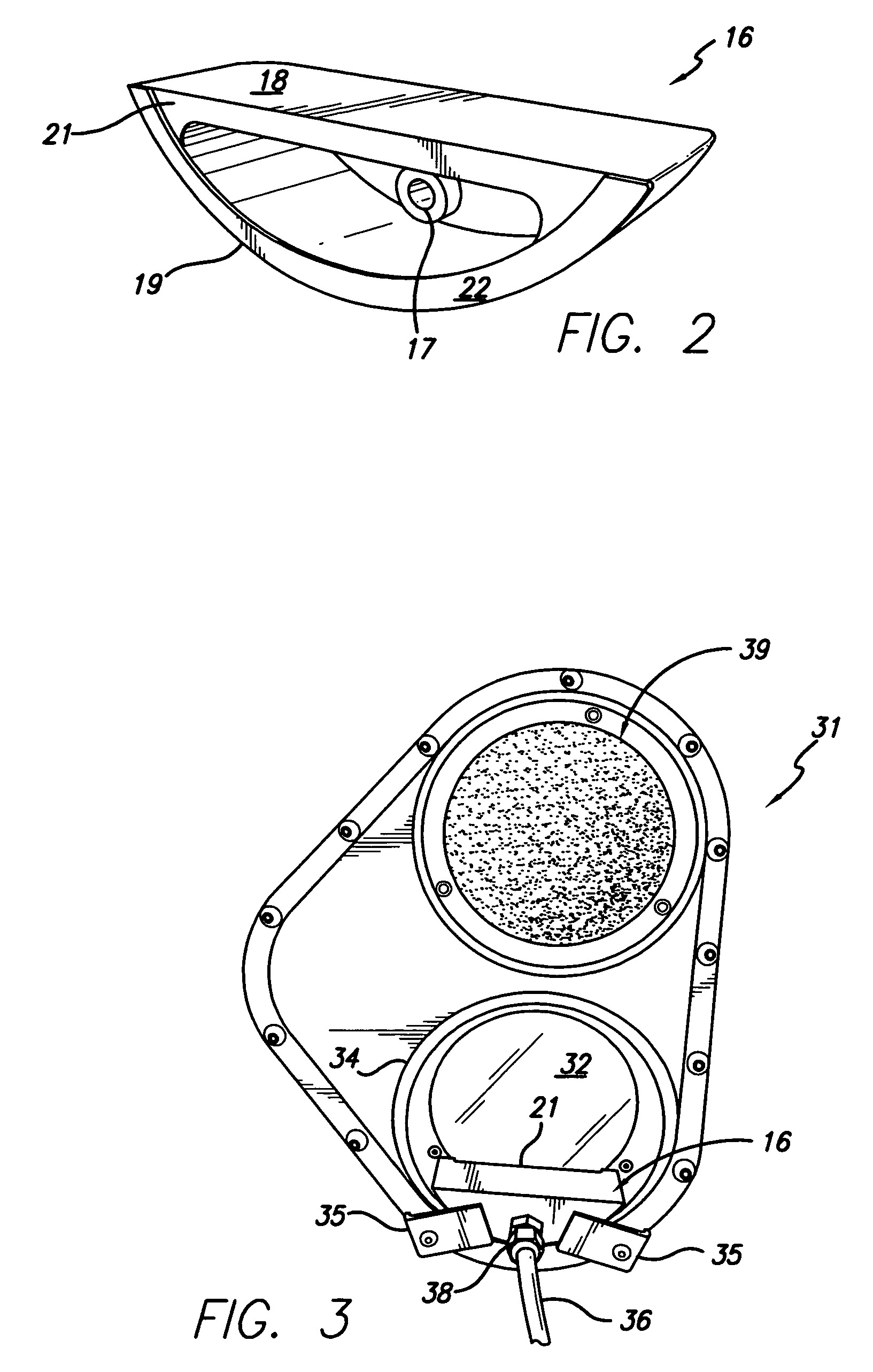Laser sintering process chamber gas curtain window cleansing in a laser sintering system
a laser sintering and process chamber technology, applied in the field of rapid prototyping and manufacturing, can solve the problems of affecting the efficiency of laser sintering, so as to avoid thermal control loss during the laser sintering process, minimize the build-up of chemical by-products, and minimize the effect of chemical by-products
- Summary
- Abstract
- Description
- Claims
- Application Information
AI Technical Summary
Benefits of technology
Problems solved by technology
Method used
Image
Examples
Embodiment Construction
[0027]A laser sintering apparatus or system having a removable build chamber is illustrated in FIG. 1 indicated generally by the numeral 10. The laser sintering system 10 includes a process chamber 11, an associated support housing 12, and a removable build chamber 14 that may be supported by a build carriage 15. The build carriage 15, along with the build chamber 14, may be removably inserted into the support housing 12. In some embodiments, the laser sintering apparatus 10 may include a lifting device (not shown in FIG. 1) that is adapted to move the build chamber 14 between a load position and a build position. As used herein, the term “build position” refers to the position of the build chamber 14 wherein the build platform is properly aligned with the powder bed such that vertical travel of the build platform is substantially perpendicular to the powder bed. In the build position the laser sintering apparatus 10 is ready to build parts. The lifting device can comprise hydraulic...
PUM
| Property | Measurement | Unit |
|---|---|---|
| Reynolds number | aaaaa | aaaaa |
| Reynolds number | aaaaa | aaaaa |
| temperature | aaaaa | aaaaa |
Abstract
Description
Claims
Application Information
 Login to View More
Login to View More - R&D
- Intellectual Property
- Life Sciences
- Materials
- Tech Scout
- Unparalleled Data Quality
- Higher Quality Content
- 60% Fewer Hallucinations
Browse by: Latest US Patents, China's latest patents, Technical Efficacy Thesaurus, Application Domain, Technology Topic, Popular Technical Reports.
© 2025 PatSnap. All rights reserved.Legal|Privacy policy|Modern Slavery Act Transparency Statement|Sitemap|About US| Contact US: help@patsnap.com



